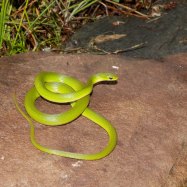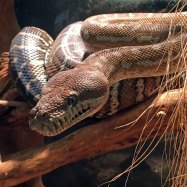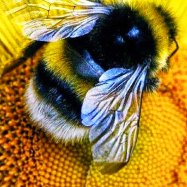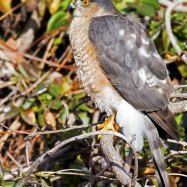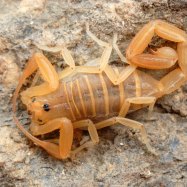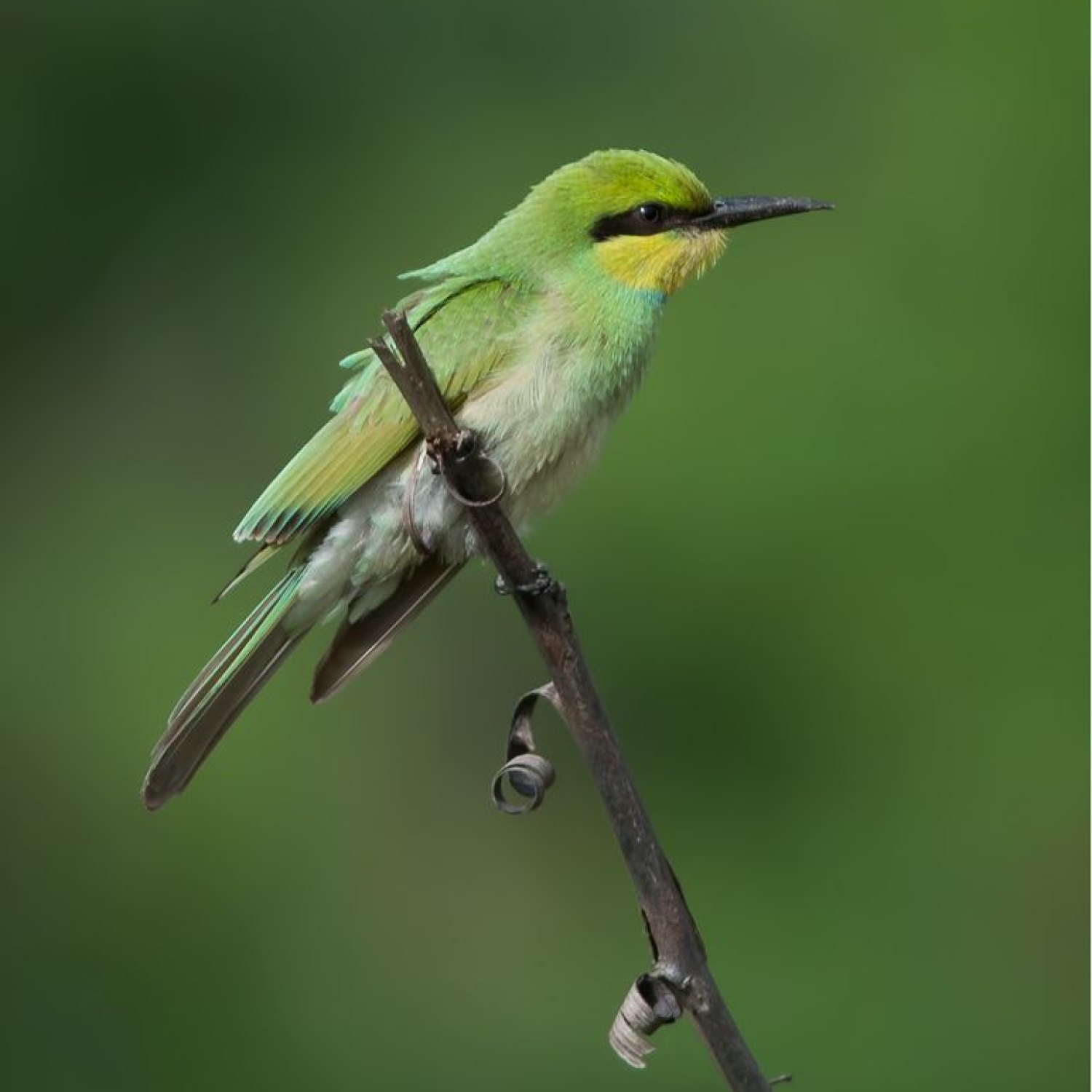
Green Bee Eater
18-20 centimeters
The Green Bee Eater, a small and colorful bird that belongs to the Meropidae family, can be found in various habitats. With a sleek body shape, it measures 18-20 cm in length. Learn more about this interesting animal and its diverse range of behaviors in its natural habitat. #GreenBeeEater #Meropidae #birdwatching
Animal Details Summary:
Common Name: Green Bee Eater
Kingdom: Animalia
Habitat: Open woodlands, savannas, scrublands, forests
The Graceful Green Bee Eater: An Exceptional Creature of the Sky
The natural world is full of wonders, and one of the most stunning creatures that inhabit our planet is the Green Bee Eater. This beautiful and elegant bird is native to Africa, the Middle East, and Asia, and its scientific name is Merops orientalis. It is commonly known as the Green Bee Eater, and this article will dive into the fascinating world of this avian species.A Spectacular Member of the Animal Kingdom
The Green Bee Eater belongs to the Animalia kingdom, which includes all animals on earth Green Bee Eater. It is part of the phylum Chordata, which includes animals with a spinal cord. Within this phylum, the Green Bee Eater falls under the class Aves, which comprises all birds. Interestingly, it belongs to the order Coraciiformes, a group of brightly colored, insect-eating birds, including kingfishers and rollers. Its family is Meropidae, which consists of 27 species of bee eaters, and it is the only member of this family found in South Asia.Their Preferred Habitat and Feeding Method
Unlike many birds, Green Bee Eaters are not picky about their habitat. They can be found in open woodlands, savannas, scrublands, and even forests. These birds prefer locations that are rich in preys such as bees, wasps, and other flying insects. Their diet mainly consists of insects, making them insectivorous birds. Interestingly, these birds have a unique feeding method German Cockroach. They use their sharp beaks to catch their prey mid-air. They swallow the prey whole, and any indigestible parts such as the exoskeletons, wings, and legs are regurgitated as pellets.Geographical Distribution and Country of Origin
Green Bee Eaters are widely distributed across three continents, namely Africa, the Middle East, and Asia. They can be found in various countries, and their population is abundant. Some of the countries where they can be spotted include Egypt, Israel, Jordan, India, Pakistan, Sri Lanka, and many others.A Striking Appearance to Behold
One of the most prominent features of the Green Bee Eater is its stunning green plumage. The bright green coloring is present on most of its body, which allows it to blend into the surrounding foliage and remain camouflaged from predators. The wings of the Green Bee Eater are a beautiful shade of blue, adding to its overall appearance. However, the most outstanding feature is its red throat, which is a distinctive mark of the species and can be identified even from a distance.A Lean and Sleek Body Shape
The Green Bee Eater has a unique and graceful body shape, which enables it to fly swiftly through the air. These birds have a slender and streamlined physique, with a pointed head and a long, thin beak. Its aerodynamic body helps it to glide through the air effortlessly.A Brief Guide to Size and Length
These birds generally measure about 18-20 centimeters in length. They are relatively small birds, but their striking appearance and unique behavior make them stand out in any habitat. Their lightweight and thin body structure allow them to fly gracefully, making them a delight to watch.A Lifestyle Far from the Ordinary
Green Bee Eaters have a fascinating lifestyle, and their behavior is far from ordinary. These birds are highly social and live in pairs or small groups of about six individuals. They are also highly territorial birds and fiercely protect their territory from other Green Bee Eaters. They build their nest in flat areas on the ground or on low bushy branches using mud, beeswax, and fibers from plants. These nests can appear as a shallow tunnel with a nesting chamber at the end, and they are shared by both the male and female birds. These nests are often a sight to behold, adorned with colorful feathers and other decorations.The mating and breeding rituals of the Green Bee Eaters are also unique. The male birds perform courtship displays, flying high into the air, and then diving towards the ground while making calls. These displays are usually followed by elaborate aerial chases, which often end in the male offering food to the female bird. The female then lays her eggs, which usually hatch within 20 days. The young birds become independent after a few weeks and leave their parents to form their own pair or group.
A Sight to Behold in Flight
The sight of a group of Green Bee Eaters in flight is truly a spectacle. These birds have a fast and agile flight, and they can move in any direction effortlessly. They are often seen perched on branches in a vertical position, scanning their surroundings for any movements of insects. When they spot a potential prey, they take flight and use their sharp beaks to catch them in mid-air. This feeding behavior is a stunning sight to behold and a testament to their incredible hunting abilities.Conservation Status and Threats
Fortunately, the Green Bee Eater population is abundant, and they are classified as a species of least concern by the International Union for Conservation of Nature (IUCN). However, like many other animals, they face threats from human activities such as habitat destruction, disturbance, and pollution. In some countries, they are also hunted for their feathers, which are used in traditional medicine. It is essential to preserve their natural habitats and regulate human activities to ensure the survival of this remarkable species.In Conclusion
The Green Bee Eater is an exceptional creature of the sky, with its striking appearance, unique behaviors, and impressive aerodynamics. It is a bird that is truly a sight to behold, and its presence adds a touch of beauty to the natural world. With its abundant population and conservation status, let us hope that this graceful bird continues to thrive and enchant us for many years to come.

Green Bee Eater
Animal Details Green Bee Eater - Scientific Name: Merops orientalis
- Category: Animals G
- Scientific Name: Merops orientalis
- Common Name: Green Bee Eater
- Kingdom: Animalia
- Phylum: Chordata
- Class: Aves
- Order: Coraciiformes
- Family: Meropidae
- Habitat: Open woodlands, savannas, scrublands, forests
- Feeding Method: Insectivorous
- Geographical Distribution: Africa, Middle East, Asia
- Country of Origin: Various countries in Africa, Middle East, and Asia
- Location: Wide range of habitats
- Animal Coloration: Bright green plumage with blue wings and a red throat
- Body Shape: Slender and streamlined
- Length: 18-20 centimeters
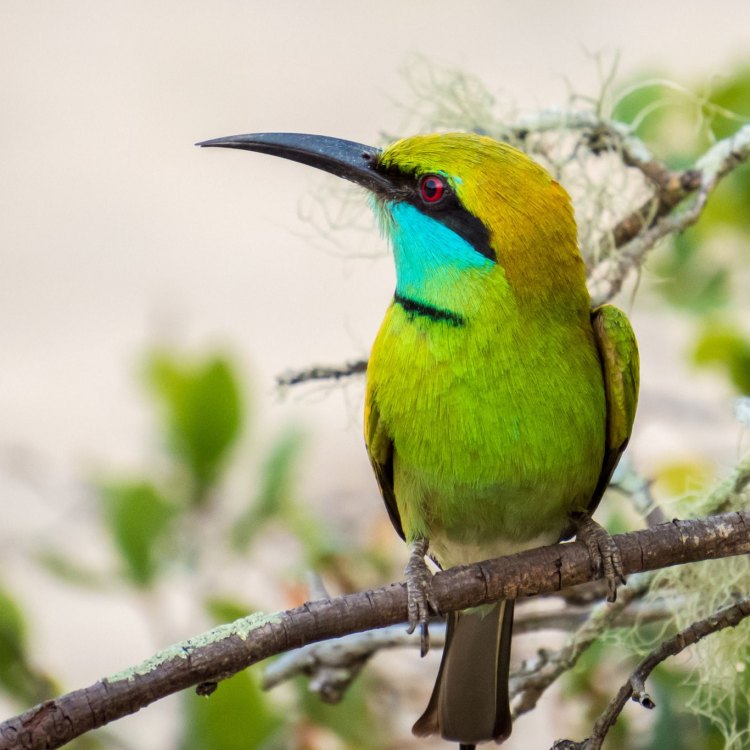
Green Bee Eater
- Adult Size: Small to medium-sized bird
- Average Lifespan: 8-10 years
- Reproduction: Monogamous
- Reproductive Behavior: Nest in burrows or tunnels in sandy banks
- Sound or Call: High-pitched trilling call
- Migration Pattern: Short-distance migrant
- Social Groups: Solitary or small groups
- Behavior: Active and agile hunters
- Threats: Habitat loss, pollution, and illegal trapping
- Conservation Status: Least Concern
- Impact on Ecosystem: Controls the population of flying insects
- Human Use: No significant human use
- Distinctive Features: Long, curved beak and vibrant plumage
- Interesting Facts: Green Bee Eaters are known for their stunning aerial acrobatics while catching insects on the wing
- Predator: Snakes, birds of prey
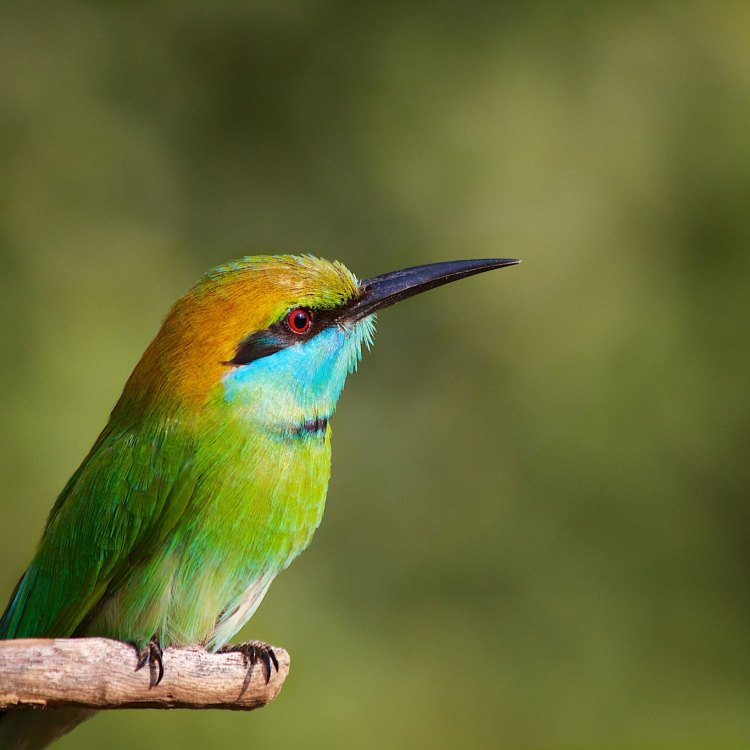
Merops orientalis
The Graceful Hunter: Exploring the Fascinating World of the Green Bee Eater
In the vast and diverse world of birds, there are some who stand out for their remarkable beauty and unique characteristics. One such bird is the Green Bee Eater, a small to medium-sized bird with stunning plumage and impressive hunting skills. This bird has a fascinating history and plays a crucial role in maintaining the delicate balance of the ecosystem. In this article, we will take a closer look at the intriguing world of the Green Bee Eater and unravel its secrets PeaceOfAnimals.Com.The Green Bee Eater, or Merops orientalis, is a member of the bee-eater family and is commonly found in Asia and Africa. As its name suggests, these birds are known for their preference for bees and other flying insects as their primary source of food. Let's delve deeper into the unique features of this beautiful bird.
Adult Size and Lifespan
The Green Bee Eater is a small to medium-sized bird, measuring approximately 18-22 cm in length and weighing 18-28 grams. They have a slender body with a long, curved beak, which is ideal for catching flying insects on the wing. Their wingspan ranges from 25-29 cm, and they have short legs and sharp claws that help them perch on branches and catch their prey.
Green Bee Eaters are not very long-lived birds, with an average lifespan of 8-10 years in the wild. This can be attributed to several factors such as predation, habitat loss, and human interference. However, in captivity, they have been known to live up to 12 years Goliath Beetle.
Reproduction and Behavior
Green Bee Eaters are monogamous birds, meaning they form pairs for life. During the breeding season, which is typically from March to October, the male bird displays elaborate courtship rituals to attract the female. These rituals include feeding and preening the female and performing synchronized flight displays.
Once the pair has bonded, they start building their nest, which is usually located in burrows or tunnels in sandy banks. The female lays a clutch of 4-7 eggs, and both parents take turns incubating the eggs for about 19 days. After hatching, the chicks are raised by both parents and leave the nest after about 25 days.
Sound or Call and Migration Pattern
The Green Bee Eater is known for its high-pitched, trilling call, which is used for communication within the species and during courtship displays. It is a pleasant, soothing sound that adds to the overall beauty of these birds.
This species of bee-eaters are also short-distance migrants, meaning they travel to nearby areas during the non-breeding season. This usually occurs in northern areas of their range where food resources may become scarce during the winter. They are known to form small groups during their migration, where they roost together in trees and shrubs.
Social Groups and Behavior
Green Bee Eaters are generally solitary birds, but they can also be found in small groups of up to 6-7 birds. They are highly social creatures and can often be seen perching and grooming each other's feathers. They are also very active birds and are known for their agile hunting techniques, soaring high to catch their prey.
These birds are diurnal, meaning they are most active during the day. They are usually seen sitting on a perch, scanning their surroundings for insects. When they spot a potential meal, they will swiftly swoop down and catch it with their sharp beaks. They are known for their stunning aerial acrobatics while hunting, making them a sight to behold.
Threats and Conservation Status
Unfortunately, like many other bird species, Green Bee Eaters are facing various threats that put their survival at risk. Habitat loss due to deforestation, pollution from pesticides, and illegal trapping for the pet trade are some of the significant threats to these birds. Human activities, such as sand mining and construction, also destroy their nesting sites, further impacting their population.
However, the good news is that the Green Bee Eater is currently listed as Least Concern on the International Union for Conservation of Nature (IUCN) Red List. This means that despite the challenges they face, their population is still stable and not at immediate risk of extinction. However, there is still a need for conservation efforts to protect their habitats and educate people about the importance of these birds in maintaining a healthy ecosystem.
Impact on Ecosystem and Human Use
The Green Bee Eater plays a crucial role in controlling the population of flying insects, especially bees and wasps. These birds are essential predators of these insects and help control their numbers, which, if left unchecked, can have a damaging effect on crops and other plants. In this way, they contribute to the balance of the ecosystem and help maintain the health of our environment.
Unfortunately, there is no significant human use for Green Bee Eaters. Their stunning beauty and unique hunting skills make them an attraction for bird watchers and nature lovers, but they are not used for any commercial or cultural purposes.
Distinctive Features and Interesting Facts
The Green Bee Eater has many distinctive features that make it stand out from other birds. One of the most remarkable is their long, curved beak, which is perfectly adapted for catching and eating flying insects. They also have vibrant plumage, with a bright green body, a yellow throat, and a blue crown. Their wings and tail feathers are adorned with various shades of blue, making them a stunning sight to behold.
Here are some more interesting facts about the Green Bee Eater:
- These birds have two toes that face forward and two that face backward, a unique adaptation that helps them perch on branches easily.
- They are known for their exceptional aerial acrobatics, where they can fly at high speeds and perform quick turns to catch their prey.
- Despite their name, Green Bee Eaters also feed on other flying insects, such as dragonflies, butterflies, and moths.
- They have a specialized gland near their eyes that secretes an oily substance, which is used to preen their feathers and keep them in good condition.
- Green Bee Eaters are also known for their communal roosting behavior, where they gather in large groups during the night to sleep.
Predators
Like all creatures in the wild, Green Bee Eaters also have natural predators that pose a threat to their survival. They are most vulnerable during their nesting and breeding season when they are busy caring for their young and cannot defend themselves easily. Snakes and birds of prey, such as hawks and eagles, are known to prey on these birds, making their survival a constant struggle.
Conclusion
In conclusion, the Green Bee Eater is a fascinating and beautiful bird with many unique features and behaviors. They are vital members of their ecosystems and play a crucial role in maintaining the balance of nature. However, like many other bird species, they face threats to their survival, making it essential for us to protect and conserve their habitats.
Next time you spot a bright green bird with stunning blue and yellow feathers, take a moment to appreciate the grace and beauty of the Green Bee Eater. And remember, it is not just a pretty bird but a remarkable creature playing a critical role in the delicate web of life.
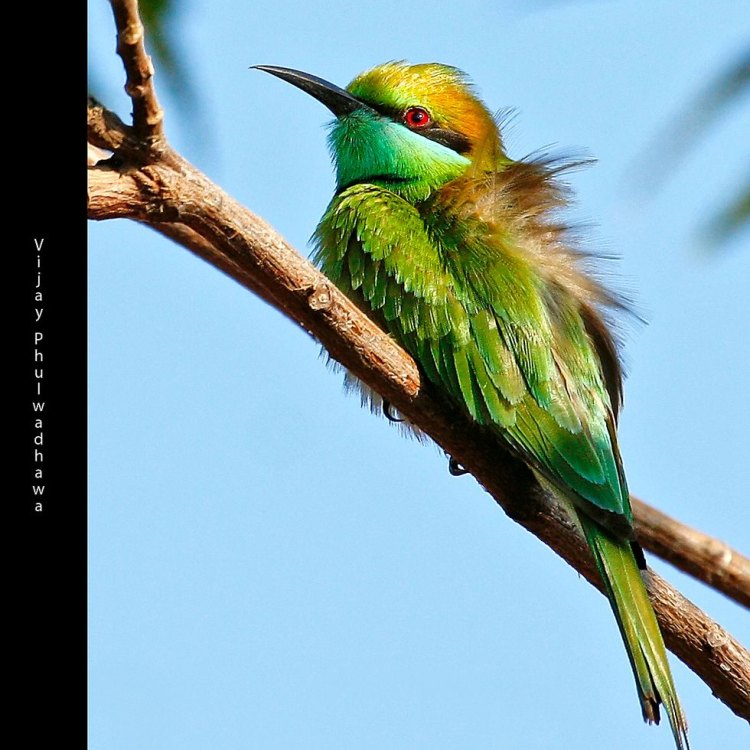
The Graceful Green Bee Eater: An Exceptional Creature of the Sky
Disclaimer: The content provided is for informational purposes only. We cannot guarantee the accuracy of the information on this page 100%. All information provided here may change without prior notice.



